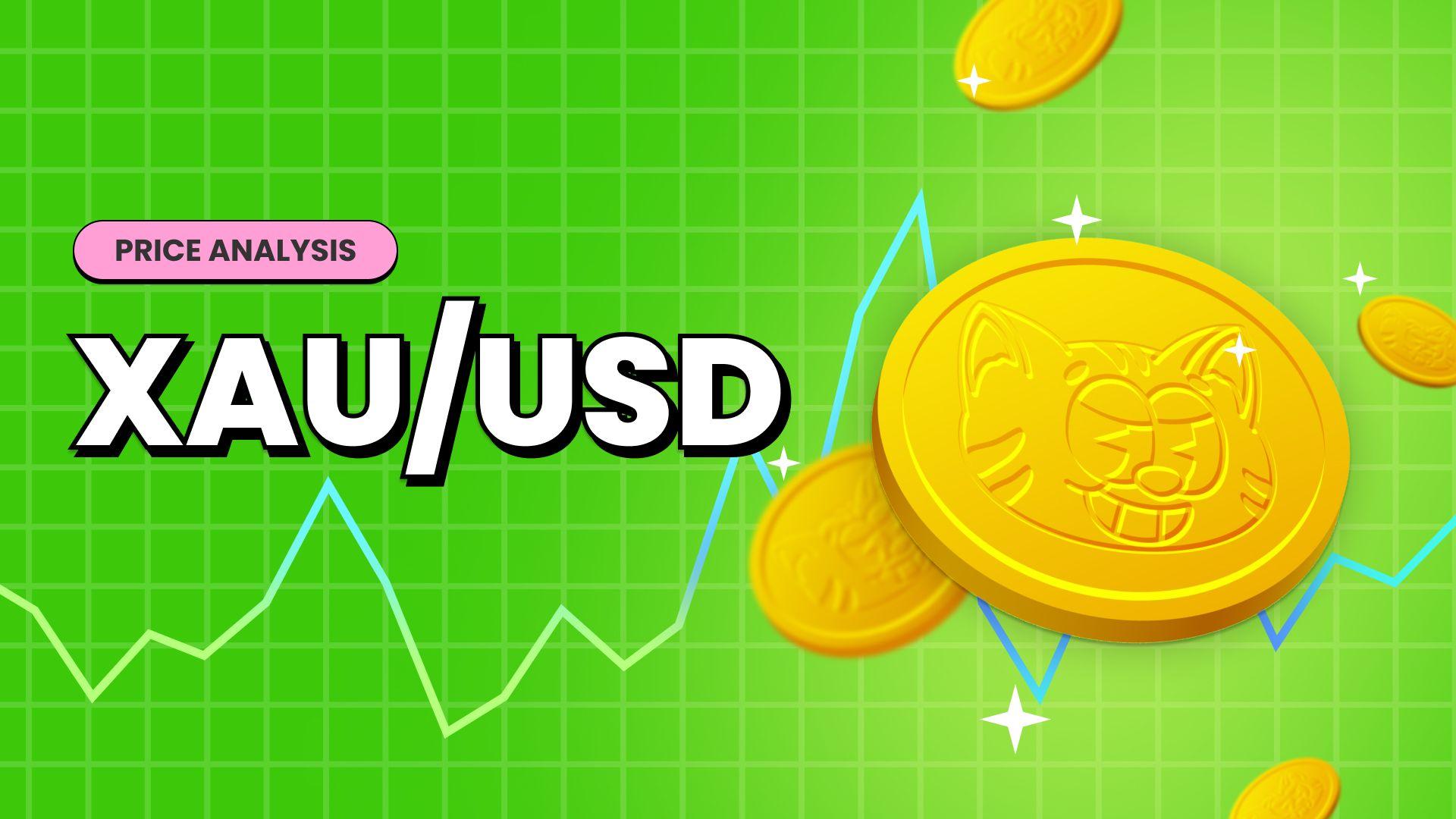Paper Gold (XAU) vs Physical Gold - What are the differences?






Many investors turn to gold as a safe-haven asset in today's fast-paced and uncertain economic climate. However, with various investment options, such as paper and physical gold, it can take time to determine which avenue is best. As the allure of passive investing surges, paper gold, also known as gold exchange-traded funds (ETFs), has gained popularity due to its convenience and liquidity. On the other hand, physical gold continues to be favored by traditionalists who prefer tangible assets and value the security it provides during times of economic turmoil.
In this article, we will delve into the key differences between paper gold and physical gold, shedding light on the pros and cons of each investment option and knowing which is better for investment goals or risk appetite.
Understanding paper gold

Paper gold (XAU) refers to gold investments that are not in the physical form but are represented by financial instruments, such as ETFs, futures contracts, or options. This form of gold investment allows individuals to gain exposure to the gold market without owning and storing physical gold. Gold ETFs, in particular, have gained immense popularity over the years as they provide investors with a convenient way to invest in gold by purchasing shares in a fund that aims to track the price of gold. However, it is essential to note that with paper gold, investors do not possess the gold itself; instead, they hold a gold claim held by the issuer of the financial instrument.
Advantages of investing in paper gold
- Investing in paper gold, also known as gold exchange-traded funds (ETFs), offers numerous advantages for investors looking to diversify their portfolios. Here are some key points highlighting the benefits of investing in paper gold.
- Easy Accessibility: Paper gold provides a convenient and hassle-free way for investors to gain exposure to the gold market without needing physical ownership. It eliminates the concerns about storage, security, and insurance commonly associated with owning physical gold.
- Liquidity: Paper gold investments are highly liquid, enabling investors to buy or sell the shares at prevailing market prices on any trading day. This flexibility allows investors to capitalize on favorable market conditions and swiftly respond to changes in the gold market.
- Diversification: Including paper gold in an investment portfolio is an effective way to diversify risk. Gold has historically shown a lower correlation with traditional asset classes like stocks and bonds, making it valuable in offsetting potential losses during market downturns.
- No Geographical Constraints: Investing in paper gold eliminates geographical constraints, allowing investors to participate in the global gold market without needing physical delivery or proximity to gold-producing regions.
Understanding physical gold

Physical gold involves purchasing and possessing gold in various forms, such as coins or bars. This traditional method appeals to investors who value the tangibility and security of owning physical assets. Physical gold is a tangible value store, representing a safe haven during economic uncertainty. Holding physical gold grants investors full ownership and control, offering protection against financial crises, inflation, and currency devaluation. Moreover, physical gold allows for direct possession and the ability to store it in secure locations, whether in a personal safe or a third-party storage facility. Despite the costs associated with physical gold, including storage fees and potential transaction costs, it continues to be favored by those seeking a long-term, tangible investment option.
Advantages of investing in physical gold
- Tangible Asset: Physical gold provides investors with a tangible asset that they can hold in their hands. Unlike paper assets, such as stocks or bonds, gold has intrinsic value and cannot be easily manipulated or devalued by any central authority.
- Hedge Against Inflation: Gold has historically proven to be an effective hedge against inflation. As the value of fiat currencies erodes over time, gold retains its purchasing power, making it a reliable store of wealth during times of rising prices.
- Diversification: Gold offers diversification benefits by adding an uncorrelated asset to an investment portfolio. Gold often performs well when stocks, bonds, or real estate values decline, providing a cushion against market downturns.
- Safe-haven Asset: During economic uncertainties or geopolitical turmoil, gold often shines as a safe-haven asset. Investors tend to flock to gold during crises, which can lead to increased demand and price appreciation.
- Long-term Store of Value: Gold has a long history of maintaining its value over time. Unlike other assets that can lose weight or become obsolete, gold has been considered a store of value for thousands of years and is likely to continue being so.
Factors to Consider when Choosing between both

When it comes to making an investment, choosing between paper and physical gold can be a daunting task. Both options have advantages and disadvantages, and understanding the factors that come into play can help make an informed decision. Some of the factors to consider when choosing between the two include:
- Tangibility: One crucial factor to consider is the physical presence of gold. Physical gold provides a tangible asset that can be held and stored securely. However, paper gold, such as exchange-traded funds (ETFs), offers a more convenient and easily tradeable form without physical storage.
- Liquidity and Accessibility: Physical gold may have specific limitations regarding liquidity and accessibility. Selling physical gold might require locating a reputable buyer or dealer, potentially causing delays during the selling process. On the other hand, paper gold can be easily bought and sold on various financial markets, providing greater liquidity and ease of access.
- Storage and Security: When choosing between paper and physical gold, consider the storage and security aspects. Physical gold requires proper storage arrangements, such as securing it in a safe or utilizing a bank's safety deposit box, which may incur additional costs. Conversely, paper gold does not necessitate physical storage as it is held in electronic or paper form, eliminating the need for secure facilities.
- Counterparty Risk: Another significant factor is the counterparty risk associated with each option. Physical gold is not dependent on any third parties and does not involve counterparty risk. However, paper gold, including gold certificates or ETFs, relies on financial institutions or issuers. Potential risks may be associated with the counterparties involved in a financial crisis or bankruptcy.
- Transaction Costs: Transaction costs are crucial in deciding between paper and physical gold. Physical gold transactions often involve additional charges, including manufacturing, transportation, and storage fees. On the other hand, paper gold transactions generally have lower transaction costs, such as brokerage fees or management expenses.
In conclusion, the debate between investing in paper gold versus physical gold has no clear winner, as both options have their own merits. It ultimately comes down to the investor's preferences, risk appetite, and investment goals. Paper gold, such as exchange-traded funds (ETFs), offers convenience, ease of trading, and the ability to gain exposure to gold price movements. However, it may carry counterparty risks and expose investors to potential systemic risks. On the other hand, physical gold provides tangible ownership protection against inflation and acts as a safe haven asset during times of economic uncertainties.
Acquiring and storing physical gold may involve additional costs and security concerns. Therefore, investors must carefully evaluate their financial situation and consider their long-term investment objectives before deciding whether to invest in paper or physical gold. A well-diversified portfolio may ultimately combine both options to achieve a balanced and integrated investment strategy.

Are you looking to start trading in the Forex Market? You can Enjoy FREE USD 10,000 Virtual Funds for trading by Signing Up on Pocket Trader. With Pocket Trader, You can invest in multiple markets, including currencies, indices, and commodities, learn from experienced traders and share ideas with pocket trader's social features to build wealth together.


